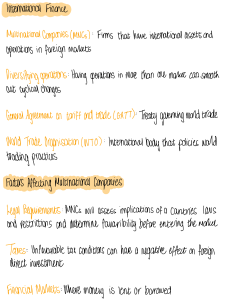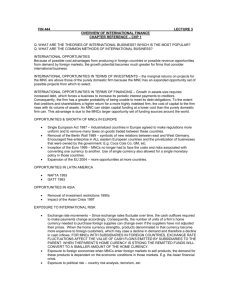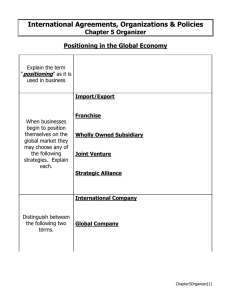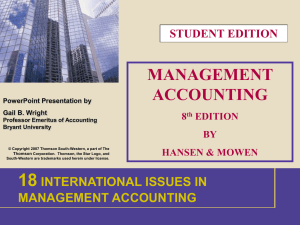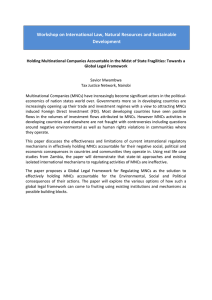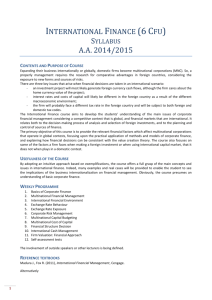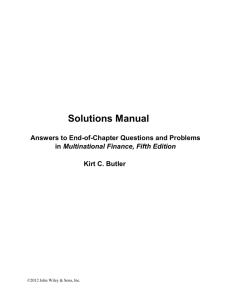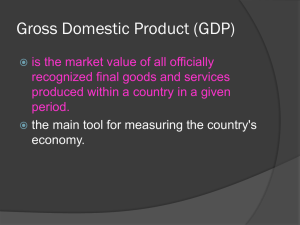Chp 1 notes - the School of Economics and Finance
advertisement
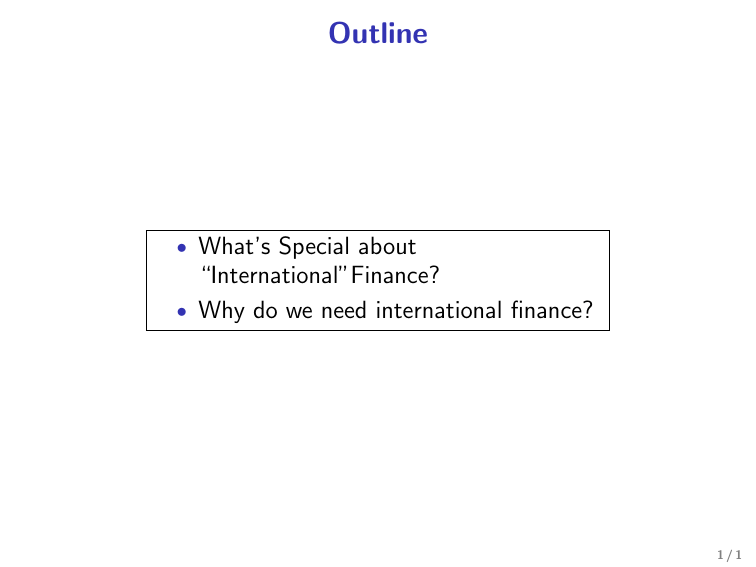
Outline What’s Special about “International”Finance? • Why do we need international finance? • 1/1 What’s Special about “International” Finance? « Foreign Exchange Risk The risk that foreign currency profits may evaporate in dollar terms due to unanticipated unfavorable exchange rate movements. • Suppose $1 = U100 and you buy 10 shares of Toyota at U10,000 per share. • One year later the investment is worth ten percent more in yen: U110,000 • But, if the yen has depreciated to $1 = U120, your investment has actually lost money in dollar terms. • 2/1 « Market Imperfections Legal restrictions on movement of goods, people, and money • Transactions costs • Shipping costs • Tax arbitrage • 3/1 « Political Risk • Sovereign governments have the right to regulate the movement of goods, capital, and people across their borders. These laws sometimes change in unexpected ways. « Expanded Opportunity Set It doesn’t make sense to play in only one corner of the sandbox. • True for corporations as well as individual investors. • 4/1 Globalization of the World Economy: Major Trends « Emergence of Globalized Financial Markets Deregulation of Financial Markets; coupled with • Advances in Technology have greatly reduced information and transactions costs, which has led to: • Financial Innovations, such as • • • • • Currency futures and options Multi-currency bonds Cross-border stock listings International mutual funds 5/1 « Emergence of the Euro as a Global Currency Currently more than 300 million Europeans are using the common currency on a daily basis. • The “transaction domain” of the euro may become larger than the U.S. dollar’s in the near future. • 6/1 « Trade Liberalization and Economic Integration Over the past 50 years, international trade increased about twice as fast as world GDP. • Many of the world’s governments have embraced free trade as the surest route to prosperity for their citizenry. • « Privatization Often seen in socialist economies in transition to market economies. • By most estimates this increases the efficiency of the enterprise. • Often spurs a tremendous increase in cross-border investment. • 7/1 Multinational Corporations A firm that has operating subsidiaries, branches or affiliates located in foreign countries. There are about 60,000 MNCs around the world. • The ownership of some MNCs is so dispersed internationally that they are known as transnational corporations. • The transnationals are usually managed from a global perspective rather than from the perspective of any single country. • 8/1 • Many MNCs obtain raw materials from one nation, financial capital from another, produce goods with labor and capital equipment in a third country and sell their output in various other national markets. 9/1 While multinational business finance emphasizes MNCs, purely domestic firms also often have significant international activities: Import & export of products, components and services • Licensing of foreign firms to conduct their foreign business • Exposure to foreign competition in the domestic market • Indirect exposure to international risks through relationships with customers and suppliers • 10 / 1 The big Mac index Eating a burger in a different country? 11 / 1 12 / 1


